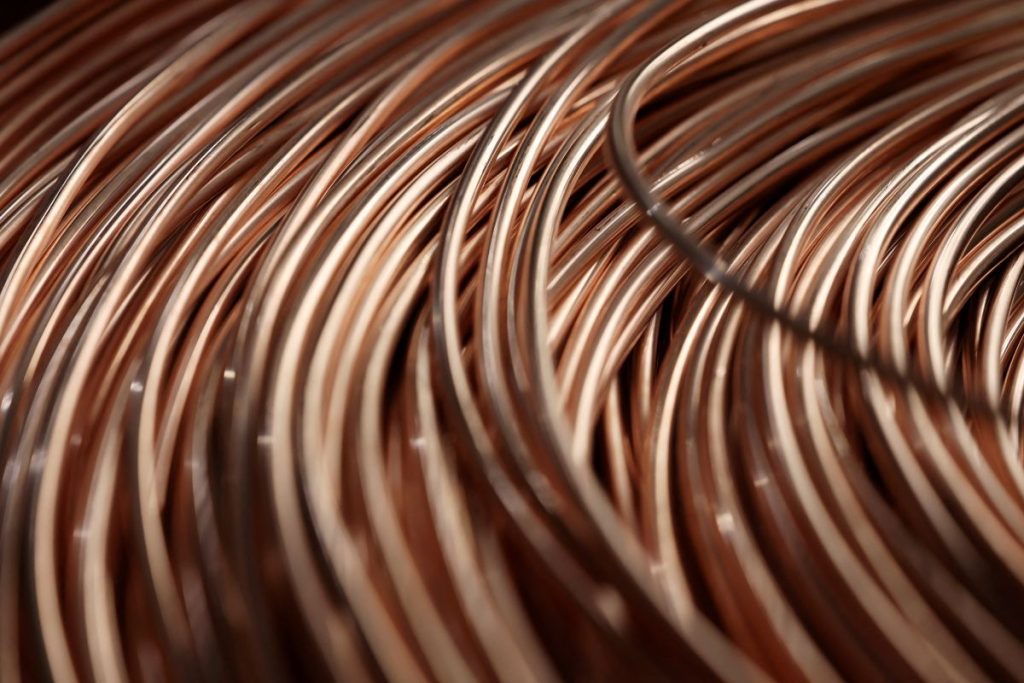 Credit: Reuters
Credit: Reuters LONDON (Reuters) -Copper consumption in the United States and India is set to emerge from China’s shadow over the next decade as demand growth in the world’s largest consumer of the industrial metal slows.
Beijing’s industrial and infrastructure expansion has helped fuel a rally that has seen copper prices rise to above $10,000 a metric ton from $1,500 25 years ago.
But while China is forecast to remain the largest market for copper into the next decade and beyond, analysts expect other demand and price influences to increasingly come into play.
Changing regional policies, infrastructure cycles and geopolitical shifts are likely to mean producers, consumers, traders and investors need to adapt to a market that has many different drivers.
“China will reduce its rate of copper consumption and stockpiling. We are going back to old-fashioned drivers of copper, which is basically replacement cycles outside China,” said Panmure Liberum analyst Tom Price.
The impact has yet to be seen, but moves by the U.S. and other countries to promote local manufacturing also mean China’s export machine and manufacturing activity is expected to slow and weigh on its demand for refined copper, which is estimated at around 15 million tons this year.
Meanwhile, the data centres needed to support AI technology and upgrades to power grid infrastructure mean copper demand growth outside China will become the driving force for prices.
“China has built its infrastructure, including its power distribution grid. Its activity will drift to a lower level to match (its) requirement,” said Price, who forecasts Chinese demand will be 6% lower in 2031 than in 2026.
Price predicts China will account for 52% of global consumption of primary copper, at around 27 million tons, in 2031 compared with 57% in 2026.
And he expects U.S. copper demand of 2.2 million tons in 2031, up nearly 50% from 2026, while for India, he forecasts copper demand to rise above 1 million tons, representing a rise of more than 30%.
‘INCREASING PUSHBACK BY COUNTRIES IN THE WEST’
Analysts also expect U.S. President Donald Trump’s imposition of 50% tariffs on copper pipes and wiring to help encourage local production.
For China, the likely outcome is the loss of a major market for its exports of copper pipe. Trade Data Monitor ranks the U.S. as China’s fourth biggest market for the product.
Last year, it imported 14.4 million tons of copper tubes and pipes directly from China and in the first seven months of this year these totalled some eight million tons, TDM data shows, underlining the potential loss of a major market for Beijing.
“China’s output of manufactured goods, particularly for export, is likely to slow down to some extent as a function of increasing pushback by countries in the West,” said Duncan Hobbs, research director at Concord Resources.
Those exports will include copper wire used for power grid infrastructure. In its last network-infrastructure review a decade ago, the U.S. Department of Energy found 70% of U.S. transmission lines were more than 25 years old.
Meanwhile, India is expanding its transmission infrastructure to support its goal of 500 GW of non-fossil fuel-based capacity by 2030.
And in Asia, excluding China, consultancy Benchmark Mineral Intelligence expects copper demand to jump 25% to more than 9.2 million tons between 2025 and 2030.
For electric infrastructure which includes power grids and generation, data centres and telecoms, BMI expects demand to rise 35% to 2.2 million tons.
BMI’s forecasts for China are 4% and 11% respectively.
MODERNISING INFRASTRUCTURE
Grid improvements in the West mainly mean modernising infrastructure. This will be slow and steady and not as copper intensive as building from scratch, as China has been doing.
Robert Edwards, principal analyst at metals consultancy CRU has expected China’s influence on the copper market to wane for some years. But this did not materialise because of Chinese investment in electric vehicles, renewables and its power grid.
CRU expects China’s consumption of global mined and recycled copper consumption to fall to 57% of 31.36 million tons in 2030, from 59% of 27.62 million tons this year.
“Demand growth potential in China is limited. You should see more growth in the rest of the world,” said Edwards.